

Book Now to Experience
F8 Hair Regrowth Treatment
1 Minute Self-Registration
Date should not be before minimal date
Author: Leila Tan|Updated: 23 July 2024
Growing hair can be a challenging journey but finding the right treatment can be a huge help in restoring hair the growth journey.

1
Hair loss hair
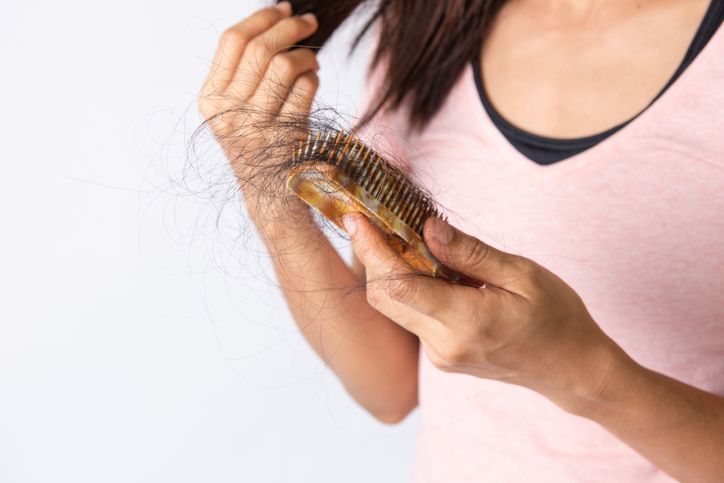
Hair loss which is also known as Alopecia , can be a temporary or permanent hair loss while it can affect just your scalp or the entirety of your body. It could be brought on by several factors such as hereditary factors, hormonal changes, illnesses, or a natural aspect of aging.
Hair loss happens when the hair follicle is destroyed and replaced with scar tissue which causes the cycle of hair development and shedding is disturbed which eventually causes hair loss. While anyone can lose hair on their head, men are more likely to do so. Baldness often refers to a significant loss of scalp hair. The most frequent cause of baldness is hereditary hair loss as people age. Some people would rather let their hair loss progress naturally without treatments.
The American Academy of Dermatology estimates that between 50 and 100 hairs fall out on average per day (AAD). Your head has roughly 100,000 hairs, so that slight loss is not visible. In most cases, new hair grows in to replace the lost hair, although this isn't always the case. Hair loss can occur suddenly or gradually over many years. It could be either transient or permanent, depending on the underlying cause.


2
Hair growth cycle

Anagen Phase
The Anagen Phase, sometimes referred to as the "Growth Phase" or "Active Phase," is when the cells in the root of your hair are dividing the fastest, resulting in the formation of more new hair. Your hair grows roughly half an inch every month approximately 6 inches per year during the anagen phase, and summertime is when it grows the fastest. This stage of the hair growth cycle typically lasts three to five years, translating into an average full-length hair growth of 18 to 30 inches.
Catagen Phase
The Catagen Phase, which marks the end of active hair growth and cuts off individual hairs from the blood supply and the cells that form new hair, follows the Anagen Phase in your hair cycle. At any given time, this stage is present in around 3% of all hairs. The Catagen Stage lasts for about ten days.
Telogen Phase
The Telogen Phase, a resting stage where strands stay in their follicles but are not actively growing, is the third stage of your natural hair development cycle. Your hair is currently in the Telogen Phase for an estimated 10–15% of the time. The Telogen stage lasts roughly three months, or one hundred days.
Exogen Phase
the point at which individual hair strands fall out of their follicles at the end of the hair growth cycle. Now the entire process can start over!
Read More

3
Diagnosis
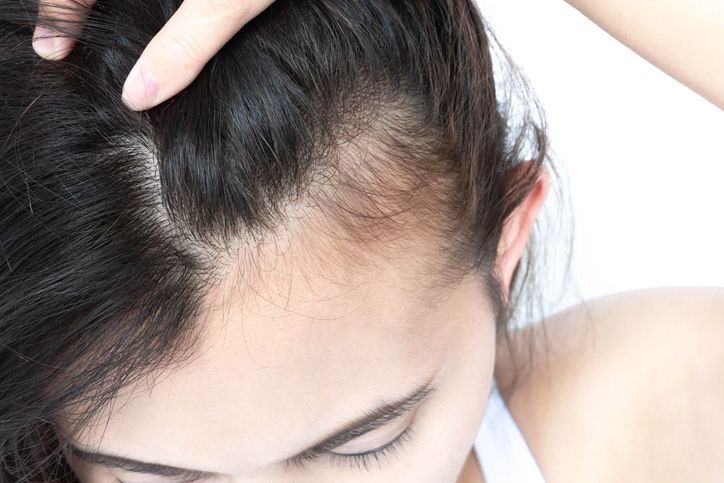
Your doctor will likely conduct a physical examination, inquire about your medical and family histories, and question you about your food and hair care regimen before establishing a diagnosis. Moreover, you could undergo the following tests:
Blood test
This could assist in identifying medical issues that can result in hair loss.
Ask inquiries
It's critical to understand how long you've experienced hair loss and whether it started off suddenly.
Scalp biopsy
To study the hair roots under a microscope, your doctor scrapes samples from the skin or from a few hairs pulled from the scalp. This can assist in determining whether hair loss is being caused by an infection.
Check the condition of your hair
Your dermatologist can learn a lot about your hair's growth and breakability by gently pulling on it.
Light microscopy
Your doctor examines hairs that have been clipped at their bases using a specialized tool. Discovering potential hair shaft diseases with the aid of microscopy.
You could require a blood test or scalp biopsy if your dermatologist believes that an illness, vitamin deficiency, hormonal imbalance, or infection is the root of your hair loss. You can undergo these tests in your dermatologist's clinic.


4
Hair loss treatment
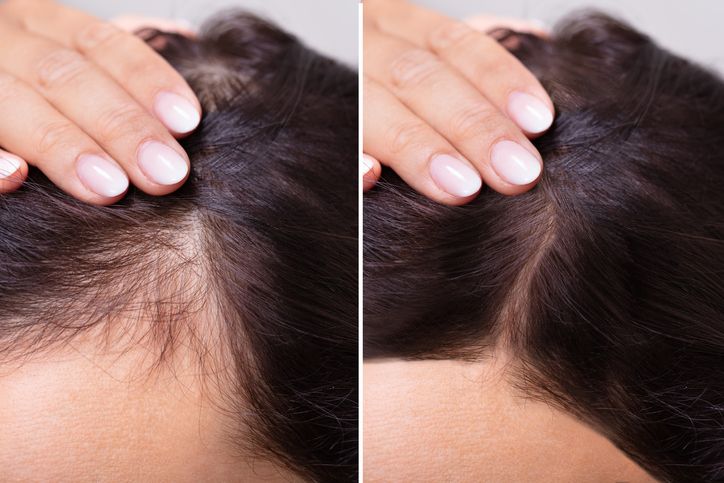
There are effective treatments for some types of hair loss. You might be able to stop or at least halt hair loss or try to regrow hair. In other cases, such as alopecia areata, when there is patchy hair loss, hair may recover on its own after a year. There are both medical and surgical options for treating hair loss.
F8 Hair Regrowth Treatment
F8 is a non-invasive procedure that supports scalp health and hair development. A hair development serum with low laser energy sweeps across the scalp to activate dormant hair follicles and fortify the hair papilla. The healing of the capillaries and promotion of their microcirculation by the energy and serum also aids in supplying nutrients that invigorate the hair follicles. You will notice less hair loss, stronger hair strands, and enhanced hair growth following the therapy.
Benefits if this treatment
Non-Invasive: F8 is a very safe, non-invasive method of treating hair loss. The scalp skin is evenly covered by the soft laser energy.
Increasing Blood Flow: Hair papilla, capillaries, and hair follicles can all be strengthened by the F8 low-energy laser.
Scalp Care: A hair growth serum injection can deep-cleanse the scalp to lessen sebum production and can also unblock hair follicles to improve scalp health.
For Both Ladies and Gentlemen: For both women and men with hair and scalp issues, including hair loss, hair thinning, oily scalp, sensitive scalp, receding hairlines, balding crowns, alopecia areata, scalp inflammation, male pattern hair loss, female pattern hair loss, post-pregnancy hair loss, and more, F8 is a very safe treatment option.
How does this treatment work?
Step 1: The client's hair loss condition is investigated by a professional hair expert. The professional uses a 200-fold magnification to assess the health of the scalp and hair follicles. The specialist then verifies the client's hair loss degree and affected locations. The aesthetic therapist then goes into great detail about F8's idea and process. The low-energy laser will also be tested on a patch by the therapist.
Step 2: The therapist distributes low-energy lasers across the scalp using the device's handpiece. It's not surgery in this step. The hair papilla and hair follicles inside are stimulated. Moreover, the capillaries in the area get stronger, allowing for a proper microcirculation of nutrients. The end effect is a scalp and hair follicles that feel healthier.
Step 3: After the low-energy lasers are released, the therapist uniformly spreads the top hair growth serum over the scalp. Simple serum absorption is made possible by laser radiation. The hair growth serum cleans the scalp, clears the pores, and moisturizes the scalp, which reduces sebum production and creates a favorable environment for hair growth with a balanced water-oil ratio. The technique promotes hair development and strengthens hair strands.

Book Now to Experience
F8 Hair Regrowth Treatment
1 Minute Self-Registration
Date should not be before minimal date

5
Hair transplant surgery
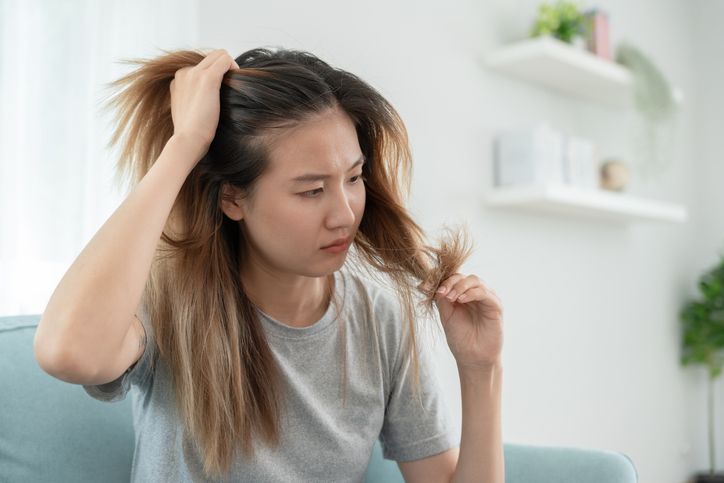
Only the top of the head is impacted by the most prevalent type of permanent hair loss. Making the most of your remaining hair is possible with a hair transplant or restoration procedure. A dermatologist or cosmetic surgeon performs a hair transplant operation by removing hair from a hair-bearing area of the head and transplanting it to a bald place.
One to many hairs can be found in each hair patch (micrografts and minigrafts). Occasionally, a wider section of skin is removed, including many hair clusters. Although you won't need to stay in the hospital for this surgery, it is uncomfortable, so you'll be given sedatives to help with the pain. Bleeding, bruising, edema, and infection are all potential dangers. For the desired result, you could need more than one procedure. Despite surgery, hereditary hair loss will eventually worsen.


6
Platelet-rich plasma (PRP)
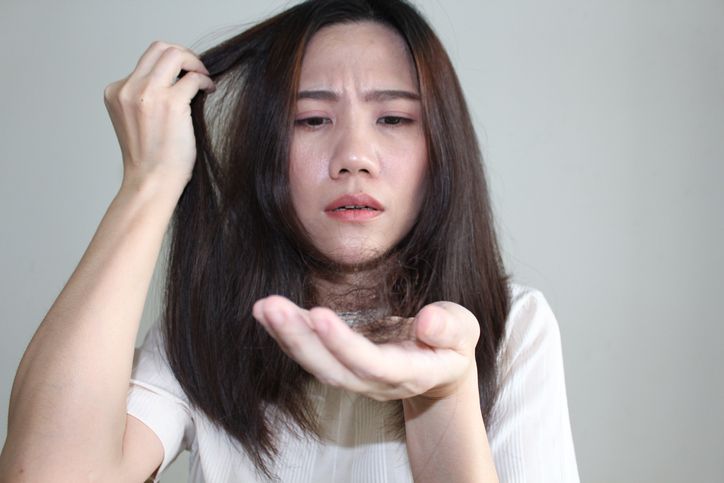
Research indicates that this is a potentially secure and efficient hair loss treatment. PRP entails extracting a small amount of blood, putting it in a machine that divides it into components, and injecting one of those components, the plasma into the area experiencing hair loss.
The entire process takes around 10 minutes, and there is typically no downtime necessary. You'll need to come back for additional injections. Usually patients visit once per month for the first three months, then once every three to six months.
Read More

7
Medical treatments
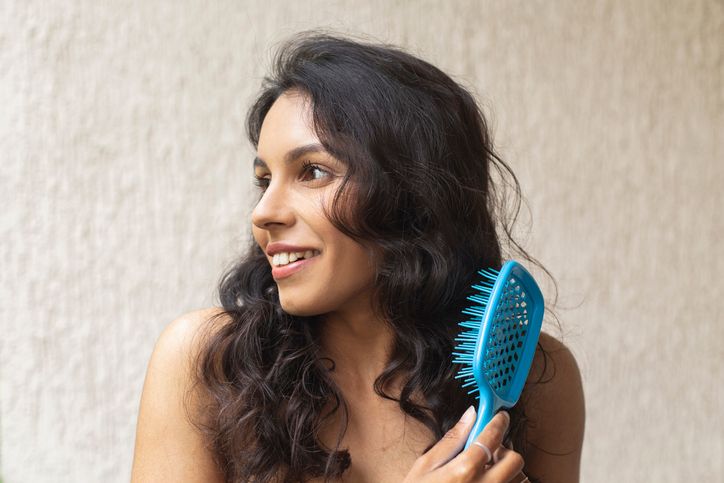
Treatment for the underlying condition that is causing your hair loss will be required. Your doctor might suggest stopping taking a particular medicine for a few months if it's the reason you're losing hair.
Minoxidil
Minoxidil is available over-the-counter (nonprescription) in liquid, foam, and shampoo forms. Use the product to the scalp skin once daily for ladies and twice daily for males for the best results. Several people favor foam that is applied to wet hair. Many people use products containing minoxidil to either regenerate hair density, decrease the pace of hair loss, or do both. To stop additional hair loss and to begin hair regrowth, therapy must last at least six months. To determine whether the treatment is effective for you, it can take a few more months. To maintain the benefits of the medication, you must use it continuously even if it is helping.
Finasteride
For guys, this medication is prescribed. It is a daily medication that you take. The hair loss of many men using finasteride slows down, and some even report fresh hair growth. Before you can determine if it's working for you, it can take a few months. To keep any benefits, you must continue taking it. For males over 60, finasteride might not operate as well. Reduced libido drive and sexual function, as well as an increased risk of prostate cancer, are rare side effects of finasteride. Women who are or could become pregnant should refrain from handling broken or crushed medications.


8
Microneedling

A microneedling tool has a large number of microscopic needles. Some studies have suggested that it may aid in promoting new hair growth. Men with mild to moderate genetic hair loss between the ages of 20 and 35 were treated in one trial with either:
* 5% minoxidil twice a day * 5% minoxidil twice a day plus weekly microneedling
The individuals who had microneedling and minoxidil had noticeably higher hair growth after 12 weeks of treatment.
According to other research, combining microneedling with another therapy such as applying platelet-rich plasma or a corticosteroid to the area where hair is thinning helps promote hair growth. It's best to see your dermatologist before purchasing a microneedling device, even though you can do so without a prescription. Certain conditions may get worse after microneedling. Purchasing the appropriate microneedling tool is also crucial.

Book Now to Experience
F8 Hair Regrowth Treatment
1 Minute Self-Registration
Date should not be before minimal date

9
Lifestyle
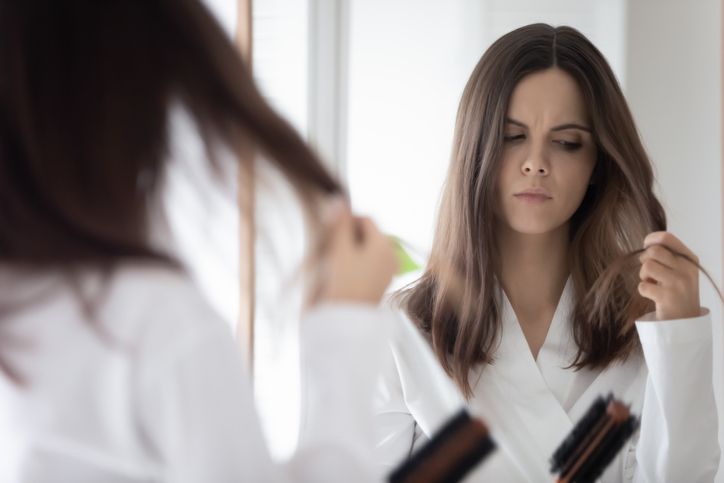
To find a hair care technique that helps you feel better about the way you look, you might want to experiment with different ones. Use volumizing styling products, dye your hair, or pick a haircut that hides a widening part, for instance. Utilize extensions or wigs, or shave your head. Consult a hairstylist for inspiration. Both permanent and temporary hair loss can be treated using these methods.
Vitamins, minerals, and other supplements
Your dermatologist can suggest taking a supplement if your blood test indicates that you aren't getting enough biotin, iron, or zinc. Your dermatologist can advise you on how to increase your consumption if you are not getting enough protein.
If a blood test reveals a deficiency, you should only take biotin, iron, or zinc. Taking a supplement can be dangerous if your levels are normal. For instance, iron poisoning can occur if you consume too much iron. Vomiting and stomach ache are some of the early symptoms of this. Other hair loss prevention supplements frequently have a high concentration of just one component.


10
Conclusion
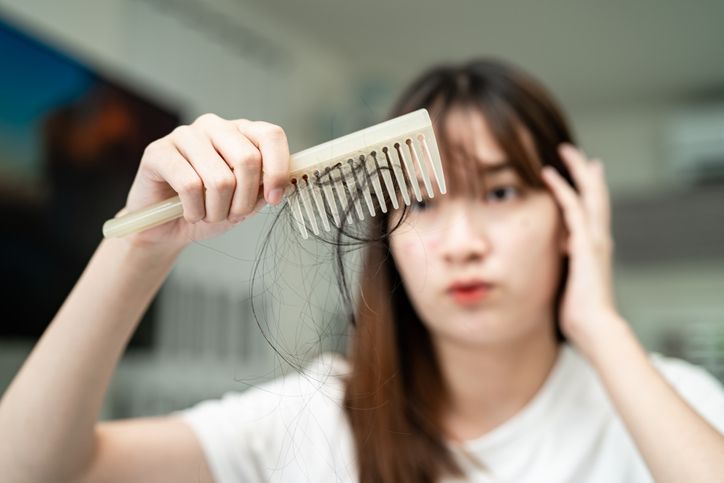
Many people who have hair loss can see hair restoration with a proper diagnosis. The sooner you begin therapy if regrowth is a problem, the more probable it is that regrowth will occur. Finding the reason for your hair loss might be difficult because there are so many potential explanations. Knowing the cause, however, is crucial if you intend to take action. In many instances, it is possible to successfully treat hair loss or take steps to stop further hair loss. The secret to success is understanding the real source of your hair loss.
FAQ
Does treatment help for androgenetic alopecia?
Male or female-pattern baldness are terms that are frequently used to describe androgenetic alopecia. Androgenetic alopecia can be treated with a variety of drugs, including finasteride or minoxidil can be used to treat men while spironolactone or minoxidil are two options for treating women and as well as finasteride which can help to slow hair loss and generate hair growth,is sometimes applied to female patients. In some circumstances, platelet-rich plasma injections, laser light devices, and surgical treatments may also be taken into account.
Can excessive combing lead to hair loss?
It is advised to brush your hair just once in the morning and once at night because excessive combing or brushing puts strain on your scalp, which can lead to breakage and hair loss.
Is there any food that can help with hair loss?
You can give your hair the intrinsic power it needs to control hair fall, unless the cause is medical or genetic and a balanced diet can help with that. Foods like eggs, spinach, oats, beans, carrots are the few foods that can help with hair loss.

Book Now to Experience
F8 Hair Regrowth Treatment
1 Minute Self-Registration
Date should not be before minimal date
Recommended Articles
COPYRIGHT© NEW BEAUTY MANAGEMENT LIMITED 2025. ALL RIGHT RESERVED.




